? Jean-Henri Riesener (1734-1806)
Cabinet
Mahogany, marble, gilt bronze | 94.5 x 97.2 x 43.2 cm (whole object) | RCIN 21211
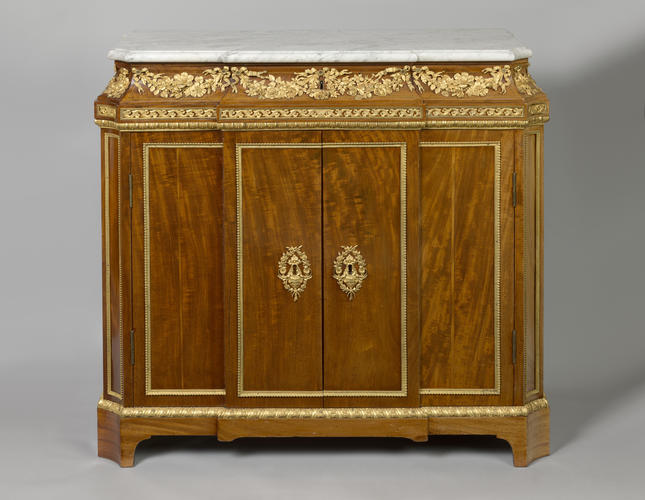
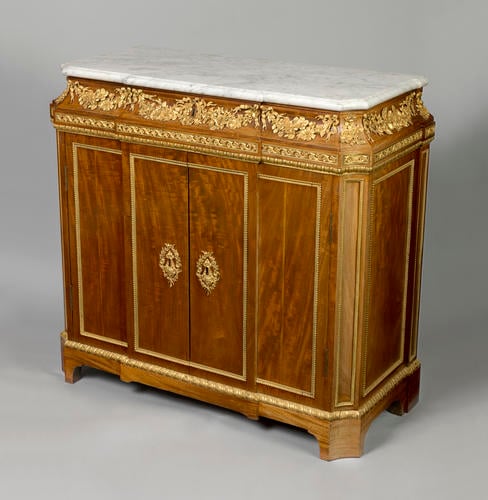
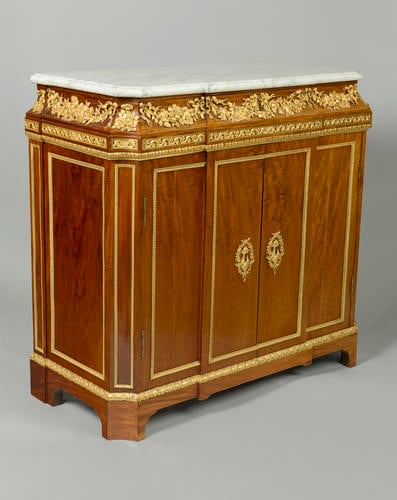

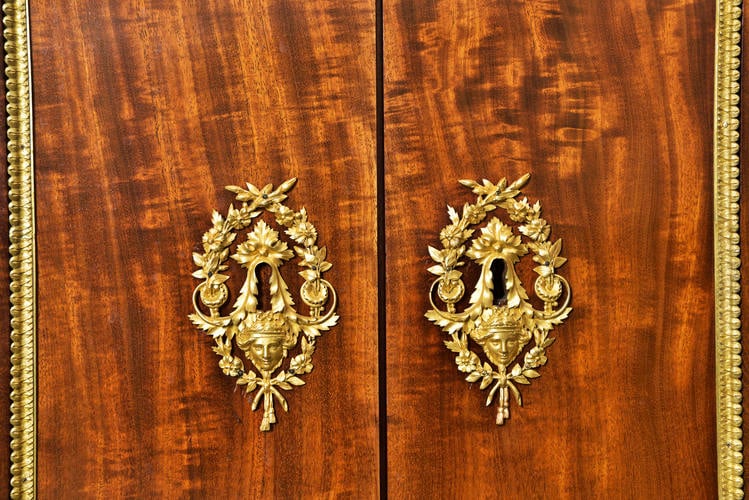

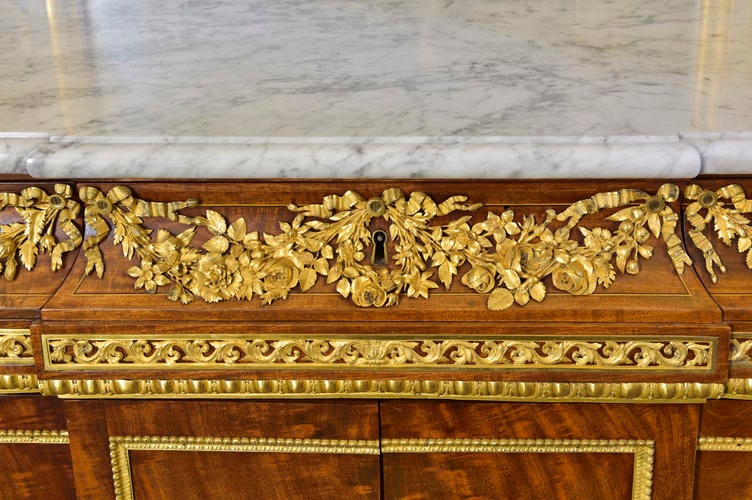
-
Rectangular cabinet veneered in mahogany with white marble top and gilt bronze mounts. The concave frieze above two doors with gilt bronze mounts of garlands of flowers, the door panels edged with gilt bronze foliage mounts. The angles with canted concave corners and feet.
Stamped J.H. RIESENER
Jean-Henri Riesener (1734-1806) was a German cabinet-maker who moved to Paris in the 1750s. He joined the workshop of Jean-François Oeben and worked on and completed the King's Desk, delivered to Versailles in 1769. In 1767 he married Oeben's widow and took over the workshop, which was situated in the Arsenal. In the same year as the accession of Louis XVI in 1774, he became ébéniste ordinaire du Garde Meuble du roi and for the next decade supplied several hundred pieces of furniture to the King, Queen Marie-Antoinette, members of the French Royal family and the court. In this role he supplied spectacular pieces as well as simple, plain pieces for the lower orders, all within the Palace walls. His work exemplifies the Louis XVI style. In 1784, a new Intendant of the Garde Meuble was appointed, Thierry de Ville d'Avray, and Riesener was deemed to expensive. He was replaced in his official capacity by Guillaume Benneman, a cheaper but less talented cabinet-maker. In spite of this change of circumstance, Riesener's workshop continued to supply furniture for the court as a contractor through Benneman. However, his official role was at an end, but he continued to receive commissions from Marie-Antoinette and also the comte and comtesse de Provence, for example the great jewel cabinet which he made for the comtesse de Provence in 1787 (RCIN 31207). After 1784 as Riesener could no longer rely on a single client in the shape of the Garde Meuble, he worked with the leading marchand mercier (dealer) of the era, Dominique Daguerre. During the Revolution many of his pieces emblazoned with armorial devices, often in elaborate coloured marquetry, were altered by his workshop, replacing overtly Bourbon or royalist imagery for Republican or less politically-charged motifs such as flowers.
This piece, although stamped, does not conform to other pieces known to have been made by Riesener. The concave or cavetto frieze section below the marble top is of high quality. The stamp is found on the boards of the upper section below the marble. The veneered doors are of good quality but are of unusual proportions, as indeed are the proportions of the entire piece. The backboard and interior are of a high quality oak and highly finished and are thus likely to be later additions. Another piece bearing Riesener's stamp, raised on short legs is in the Metropolitan Museum of Art, New York (1982.60.51). Reverse branded with Buckingham Palace 1866 inventory brand 'ROOM 226@. This room is in the East Wing of Buckingham Palace and has been sucessively named The Wilkie Room (1875), Visitors Sitting Room (1911), Buhl Bedroom (1914) and the Royal Visitors Bedroom (1950s).Provenance
First recorded in Buckingham Palace, 1866.
-
Creator(s)
(nationality) -
Medium and techniques
Mahogany, marble, gilt bronze
Measurements
94.5 x 97.2 x 43.2 cm (whole object)








